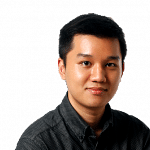The creative domains of artists and musicians may not be immune to the technological clutches of AI for long, if one of Google's more ambitious experimental projects aimed at using machine learning to create art and music takes flight.
Users may soon be able to draw pointy ears, for example, and have a software automatically throw up rough, cartoony sketches of a cat's face.
This was one of two new software programs released by Google's Project Magenta team on the closing day of the Google I/O 2017 last Friday which allow programmers to write code that lets computers generate doodles and images, or create new kinds of music.
Project Magenta is one of the many projects under Google's Brain team, a research team dedicated to experimenting with new and different forms of machine learning to make computers more intelligent.
"Magenta stands for music and art generation," said Google research scientist Douglas Eck, who is working on Magenta.
The first software, named SketchRNN, uses AI to identify what a user is drawing and predicts what comes next.
To do so, the research team gathered more than five million user-drawn sketches from a game named Quick, Draw! - which Google released last year -that gave users an object to draw within 20sec.
By learning how humans draw, the SketchRNN program is able to produce drawings by guessing what you want it to draw, although it is currently restricted to 75 objects such as cats, trucks and even yoga poses.
The second program, named NSynth, takes individual audio samples and combines them to make new sounds. It can also string these individual tones to form a song.
For instance, the AI software can analyse the distinct audio qualities of a bass note and a flute tone, and combine the properties of the two to form a brand-new bass-flute hybrid note.
By generating enough of these notes in succession, NSynth can then produce "songs" comprising notes that no physical instrument can currently make.
Lester Hio

